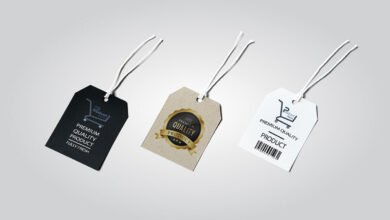Mastering Product Page Optimization: A Comprehensive Guide

In the competitive world of e-commerce, a well-optimized product page is essential for driving conversions, improving user experience, and enhancing search engine visibility. Product page optimization involves tailoring your product pages to meet customer needs, showcase value, and rank higher in search engine results pages (SERPs). This article provides an in-depth exploration of strategies and best practices for optimizing product pages to boost your online store’s performance.
Why Product Page Optimization Matters
A product page is more than just a space to showcase items; it’s a critical touchpoint in the buyer’s journey. Here’s why optimization is crucial:
- Improved Conversion Rates: A clear, informative, and visually appealing product page can persuade visitors to make a purchase.
- Enhanced SEO Performance: Optimized pages rank higher on search engines, increasing visibility and attracting organic traffic.
- Better User Experience: A well-structured page with fast load times and easy navigation keeps customers engaged.
- Reduced Cart Abandonment: By addressing potential buyer concerns and providing a seamless shopping experience, you can lower cart abandonment rates.
See also: How to Leverage AI for Smarter Content Creation
Key Elements of Product Page Optimization
1. Compelling Product Titles
- Use descriptive and concise titles that include primary keywords.
- Highlight unique selling points (USPs), such as “Eco-Friendly Cotton T-Shirt” or “Wireless Noise-Canceling Headphones.”
2. Detailed Product Descriptions
- Write engaging, informative descriptions that answer common customer questions.
- Incorporate relevant keywords naturally to improve SEO.
- Focus on benefits and features, emphasizing how the product solves a problem or meets a need.
3. High-Quality Images and Videos
- Include multiple high-resolution images showcasing the product from various angles.
- Use zoom functionality for detailed views.
- Add videos demonstrating product usage, benefits, or assembly instructions.
4. Customer Reviews and Ratings
- Display authentic customer reviews to build trust and social proof.
- Encourage customers to leave reviews by offering incentives like discounts or loyalty points.
5. Clear Call-to-Action (CTA) Buttons
- Use prominent, action-oriented CTAs such as “Add to Cart” or “Buy Now.”
- Ensure buttons are easily visible and functional across all devices.
6. Pricing and Availability Details
- Display pricing prominently, including any discounts or special offers.
- Indicate stock availability to create urgency (e.g., “Only 3 left in stock”).
7. Fast Page Load Times
- Optimize images and videos to reduce file size without compromising quality.
- Use a Content Delivery Network (CDN) to speed up content delivery.
- Minimize HTTP requests and leverage browser caching.
8. Mobile Responsiveness
- Ensure the product page is fully functional and visually appealing on mobile devices.
- Use responsive design to adapt layouts for different screen sizes.
9. Structured Data Markup
- Implement schema markup to provide search engines with detailed information about your products.
- Include attributes such as product name, price, availability, and reviews to enhance rich snippets in search results.
Strategies to Optimize Product Pages for SEO
1. Keyword Research
- Identify target keywords using tools like Google Keyword Planner, Ahrefs, or SEMrush.
- Focus on long-tail keywords with lower competition but high purchase intent.
2. Optimize Meta Tags
- Write compelling meta titles and descriptions that include target keywords.
- Keep meta descriptions under 160 characters to avoid truncation in search results.
3. URL Structure
- Use clean, descriptive URLs (e.g., www.example.com/wireless-headphones).
- Avoid long or complex URLs with unnecessary parameters.
4. Internal Linking
- Link to related products or categories to improve site navigation and encourage cross-selling.
- Use descriptive anchor text for better context.
5. Alt Text for Images
- Add descriptive alt text to all product images for better accessibility and SEO.
- Include target keywords where appropriate.
6. Regular Content Updates
- Refresh product descriptions and images periodically to keep them relevant.
- Highlight new features, updates, or seasonal promotions.
Enhancing User Experience
A great user experience is as important as SEO for optimizing product pages. Here are some tips:
1. Provide Detailed Specifications
- Include a dedicated section for technical details, dimensions, materials, and compatibility.
2. Simplify Navigation
- Use breadcrumbs to help users understand their location within the site hierarchy.
- Add filters and sorting options to enable customers to find products quickly.
3. Enable Quick View Options
- Allow users to preview key product details without leaving the category or search results page.
4. Offer Multiple Payment and Shipping Options
- Provide flexible payment methods, such as credit cards, digital wallets, and buy-now-pay-later services.
- Clearly state shipping options, costs, and estimated delivery times.
5. Address Customer Concerns
- Include FAQs that address common queries about the product.
- Provide a clear and accessible return policy.
Measuring the Success of Product Page Optimization
Track key performance metrics to evaluate the effectiveness of your optimization efforts:
- Conversion Rate: Measure the percentage of visitors who complete a purchase.
- Bounce Rate: Monitor how often users leave the page without interacting.
- Average Time on Page: Assess how engaging your product pages are.
- Organic Traffic: Track the number of visitors arriving from search engines.
- Revenue per Visitor: Calculate the average earnings generated by each visitor.
Conclusion
Product page optimization is a vital aspect of e-commerce success. By focusing on SEO best practices, enhancing user experience, and addressing customer needs, you can create product pages that attract traffic, build trust, and drive conversions. As the digital marketplace evolves, staying ahead with continuous optimization will ensure your online store remains competitive and profitable.




